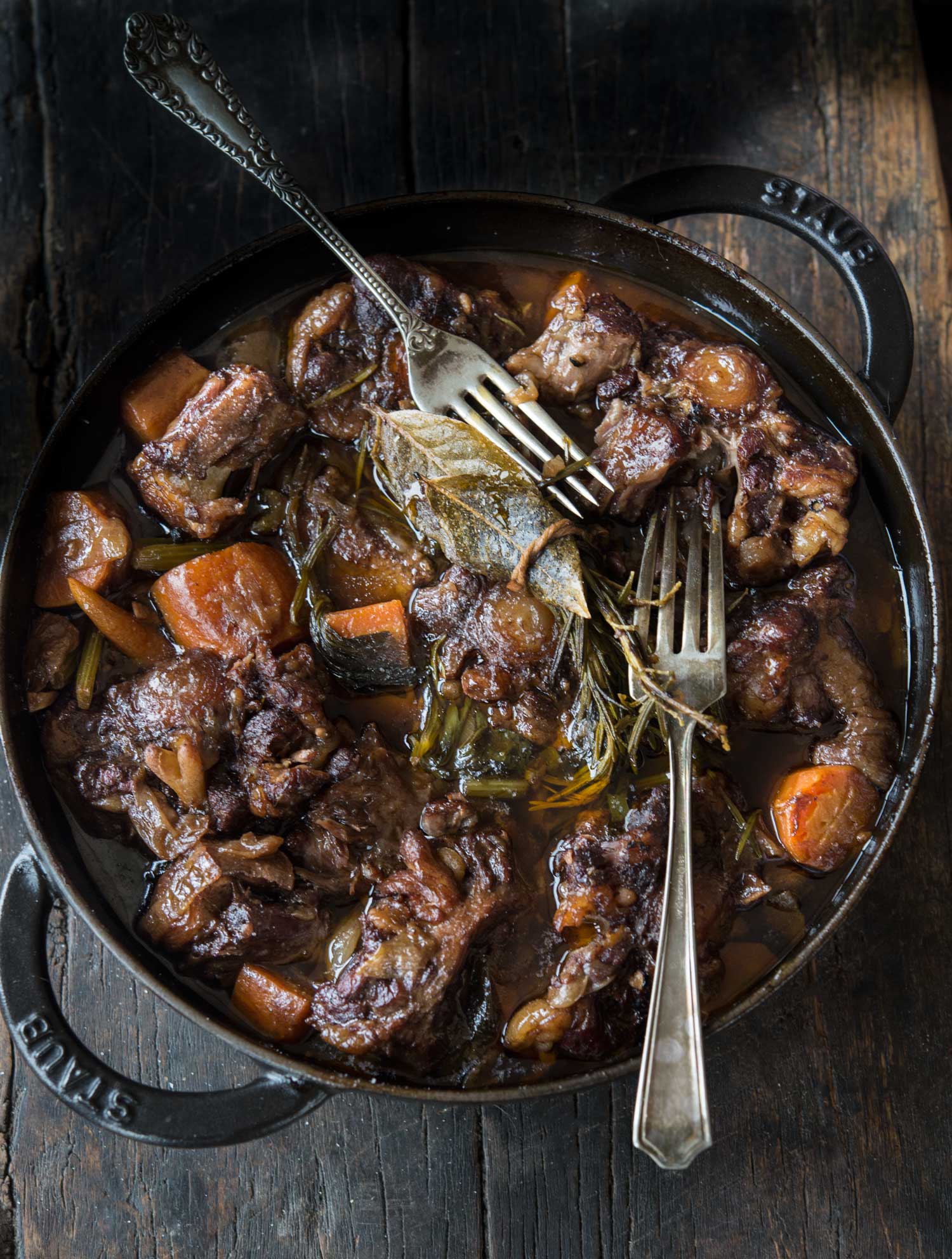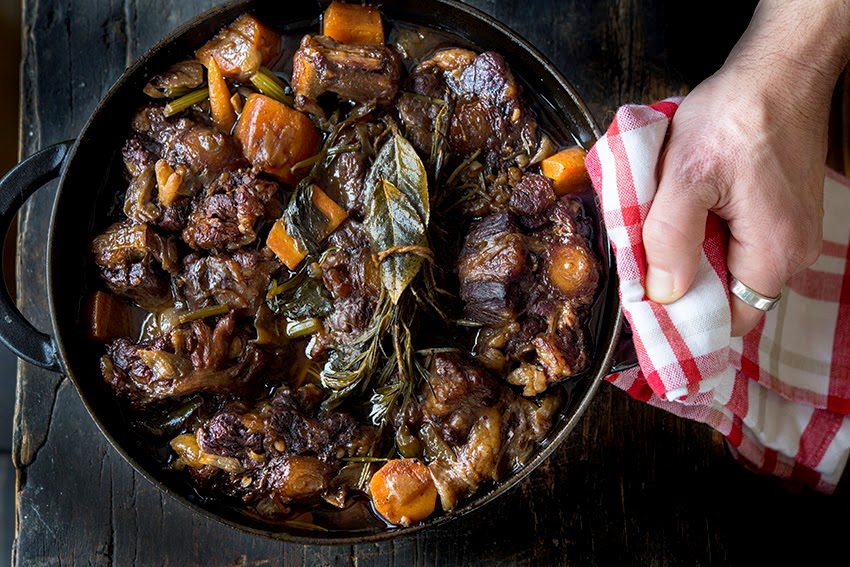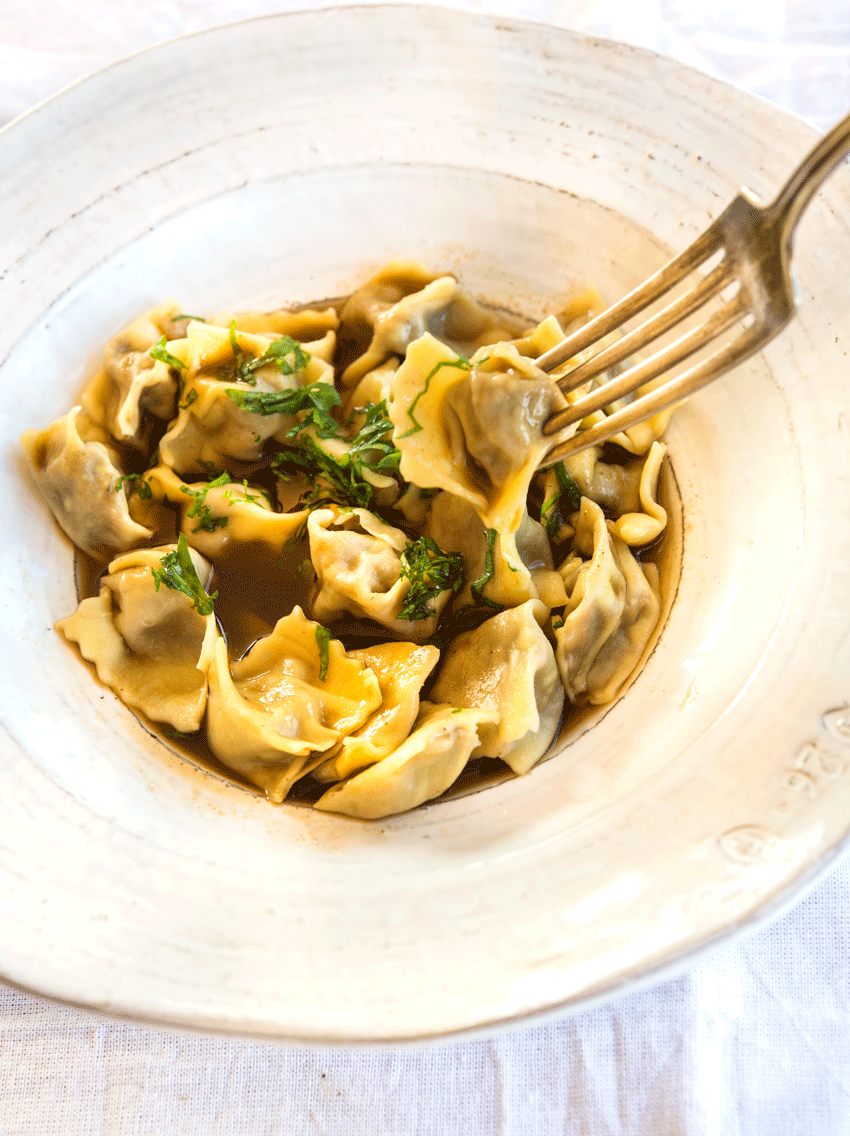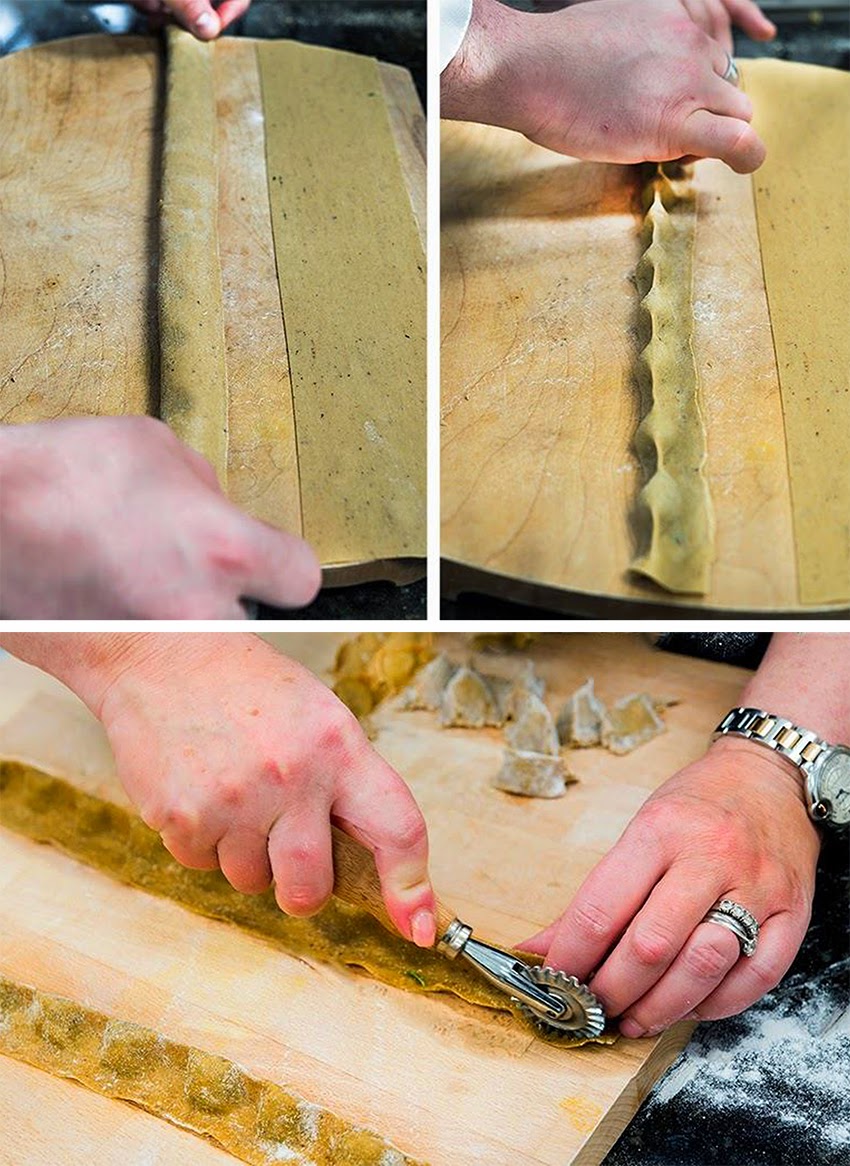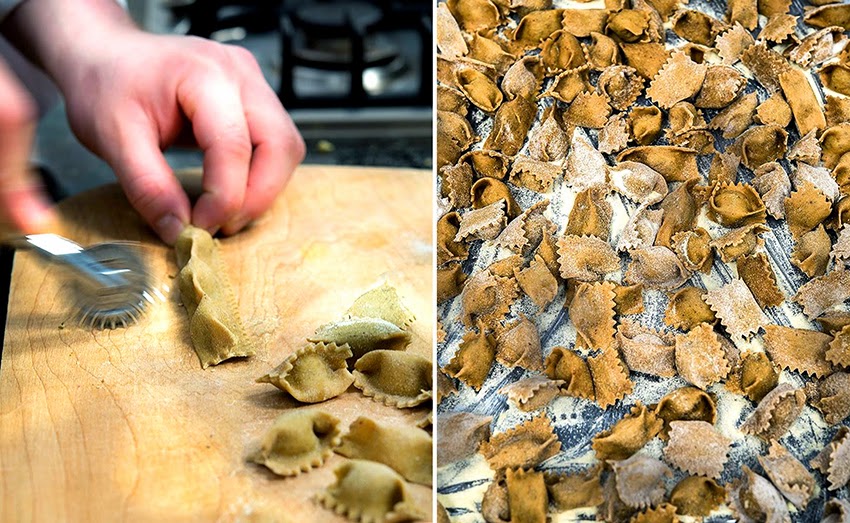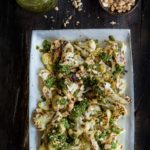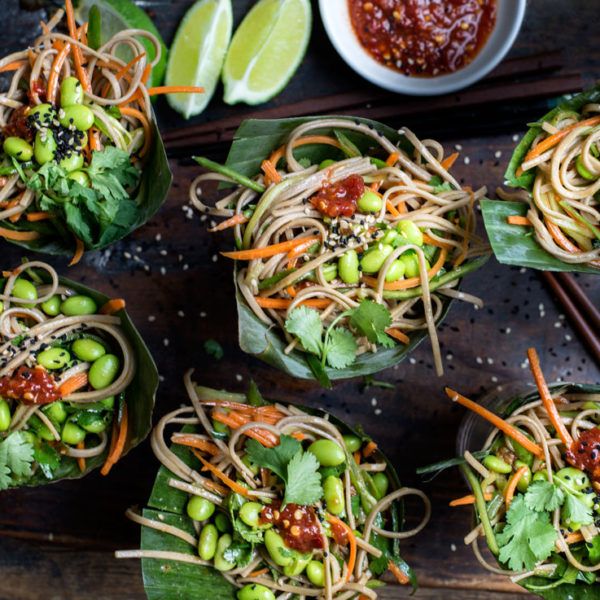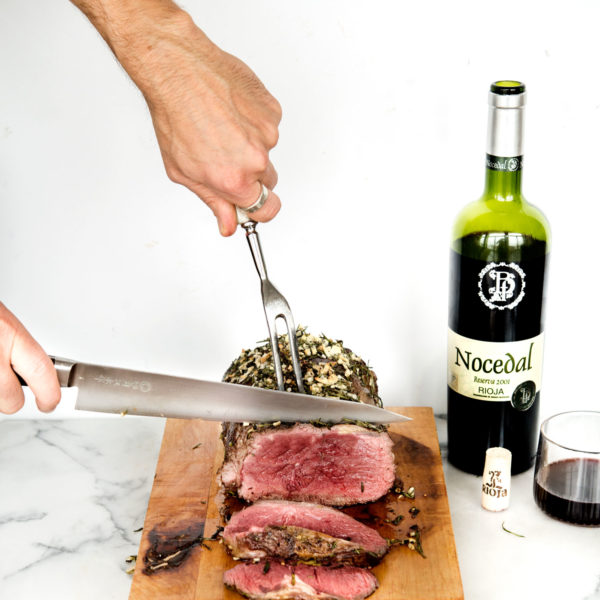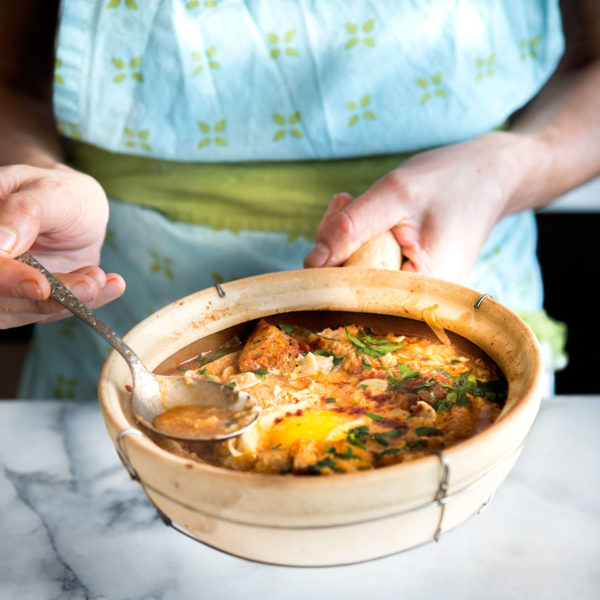I’ve grown to really appreciate a slow braise. Braising seems particularly well-suited for a cold winter’s day (okay, technically not winter anymore, but it’s still cold around here). The kind of day in which you have no plans to leave your house, but rather to curl up with a good book or binge watch/catch up on your favorite television series while your home is filled with the most enticing aromas. An excuse to take it easy. To stay in your pjs all day. That’s how I spent a recent peaceful Sunday.
My initial plan was to braise short ribs. I had the short ribs in hand, but then oxtail caught my eye. I had never cooked oxtail and could only remember having it out, maybe once or twice before (but it’s been a while). There’s only one way to find out if you like something…so oxtail it is.
The best cuts of meat for braising are typically those that are less tender. Such cuts tend to be less expensive than their more tender counterparts. My [grass-fed] oxtail was around $4.50/pound. A perfect braising meat, as oxtail is bony and gelatin-rich.
No matter the cut of meat you intend to use, the braising process is essentially the same:
1) pan-sear the meat until nicely browned on all sides;
2) add the aromatics (i.e., onion, celery, carrot) and fresh herbs;
3) add some braising liquid (e.g. wine, beer, vinegar, and/or stock);
4) cover and cook in the oven at a low temperature for several hours, until fall-off-the-bone tender;
5) lastly, use the delicious pan gravy to create a flavorful sauce to drizzle over your finished dish.
Some things you just can’t rush. Sometimes, it’s all about long and slow…
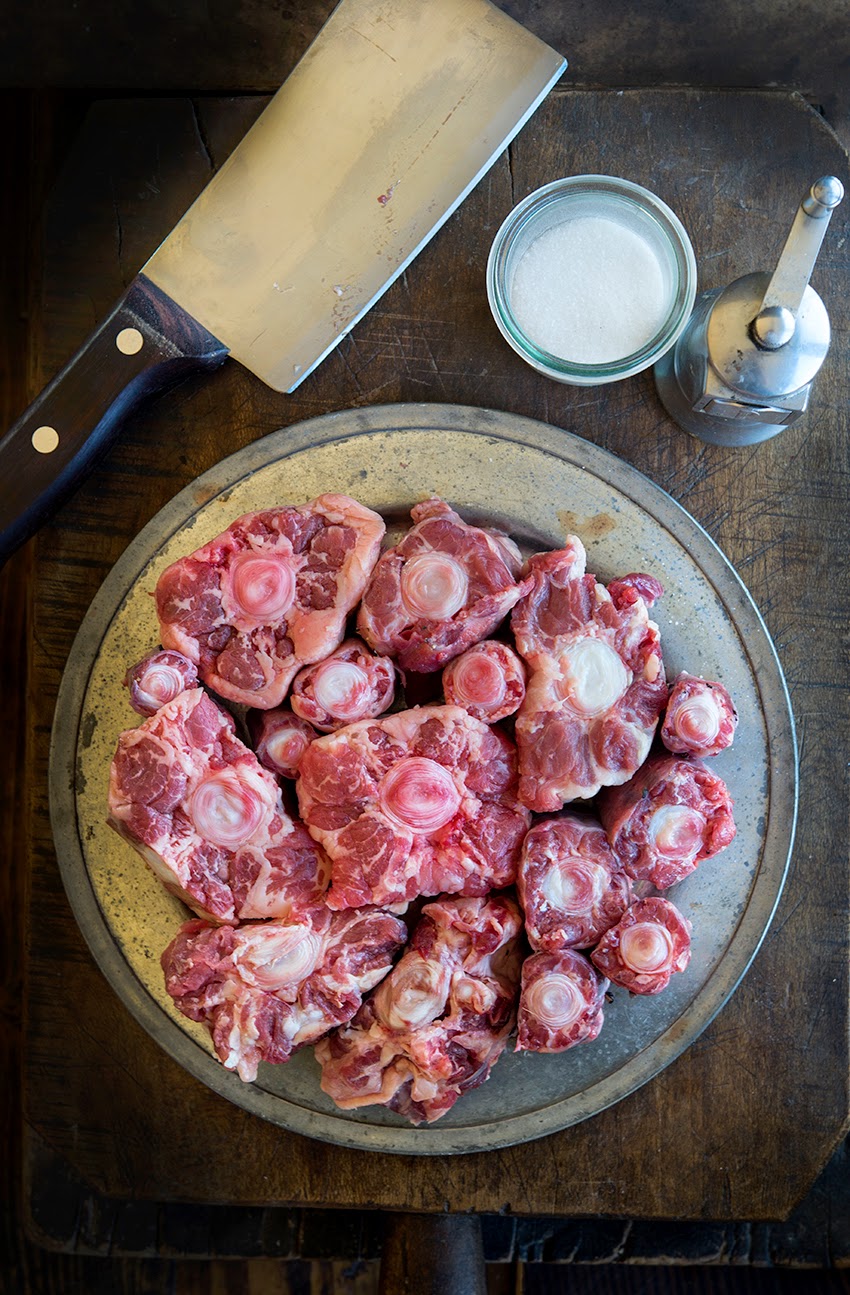
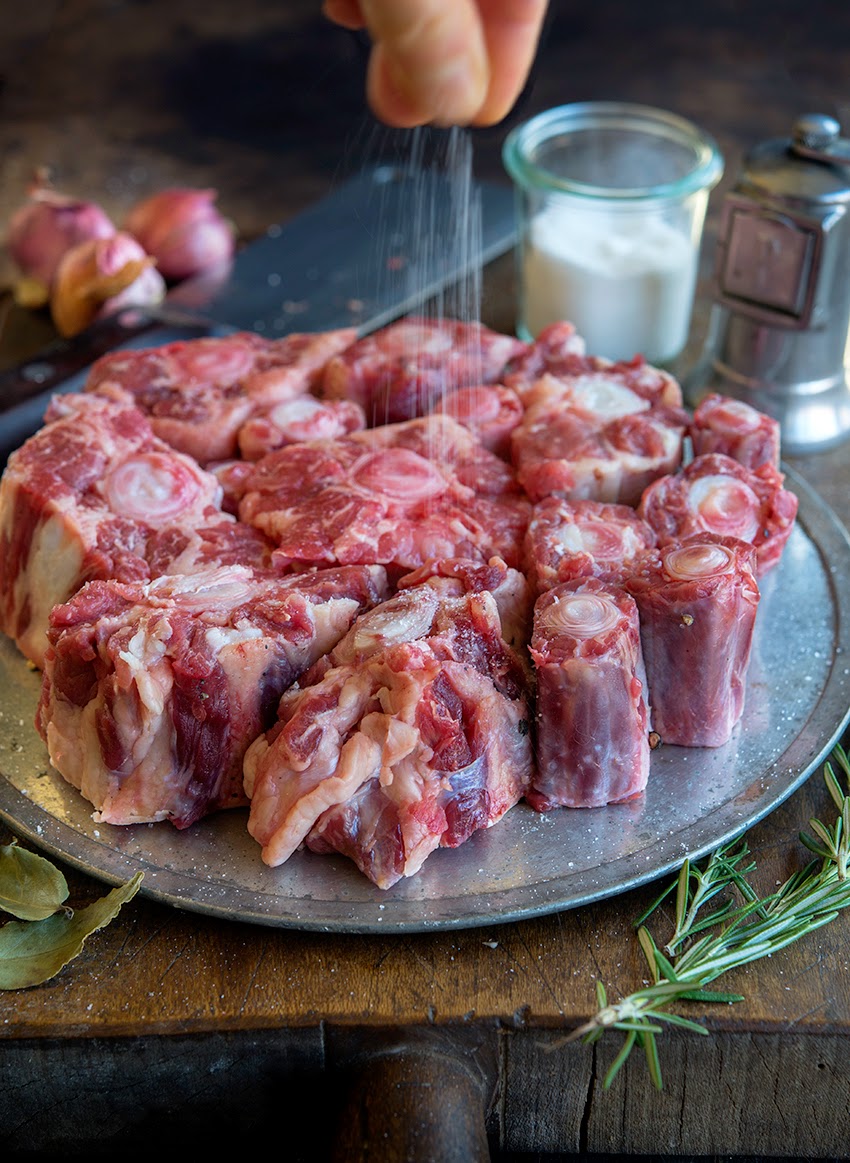
I took the oxtail one step further with a homemade agnolotti, a type of pasta from the Piedmont region of Italy.
On its own, braised oxtail is hearty and rich. As a filling for pasta, the oxtail is somehow transformed into something more light and delicate. Little pillows of rich goodness, bathed in a beef broth (from the braising liquid). Finished simply with thinly sliced parsley, lemon zest, and freshly grated Parmesan.
Pasta time…
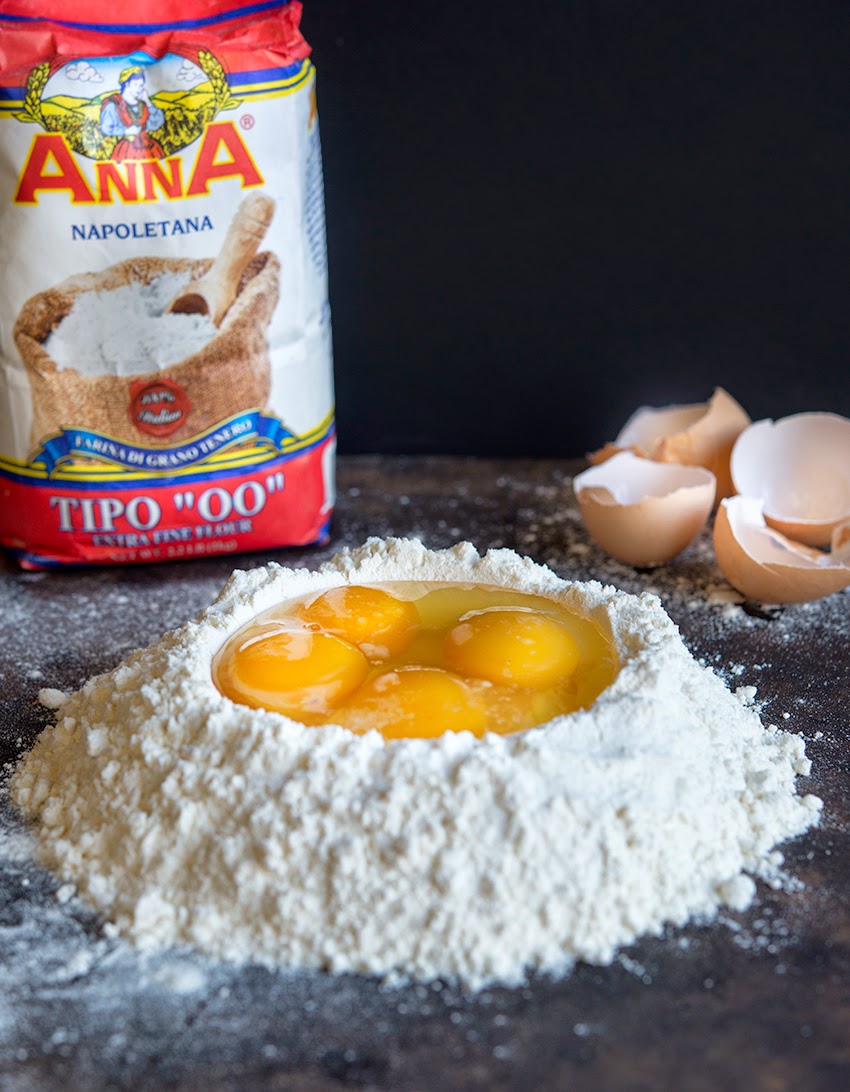
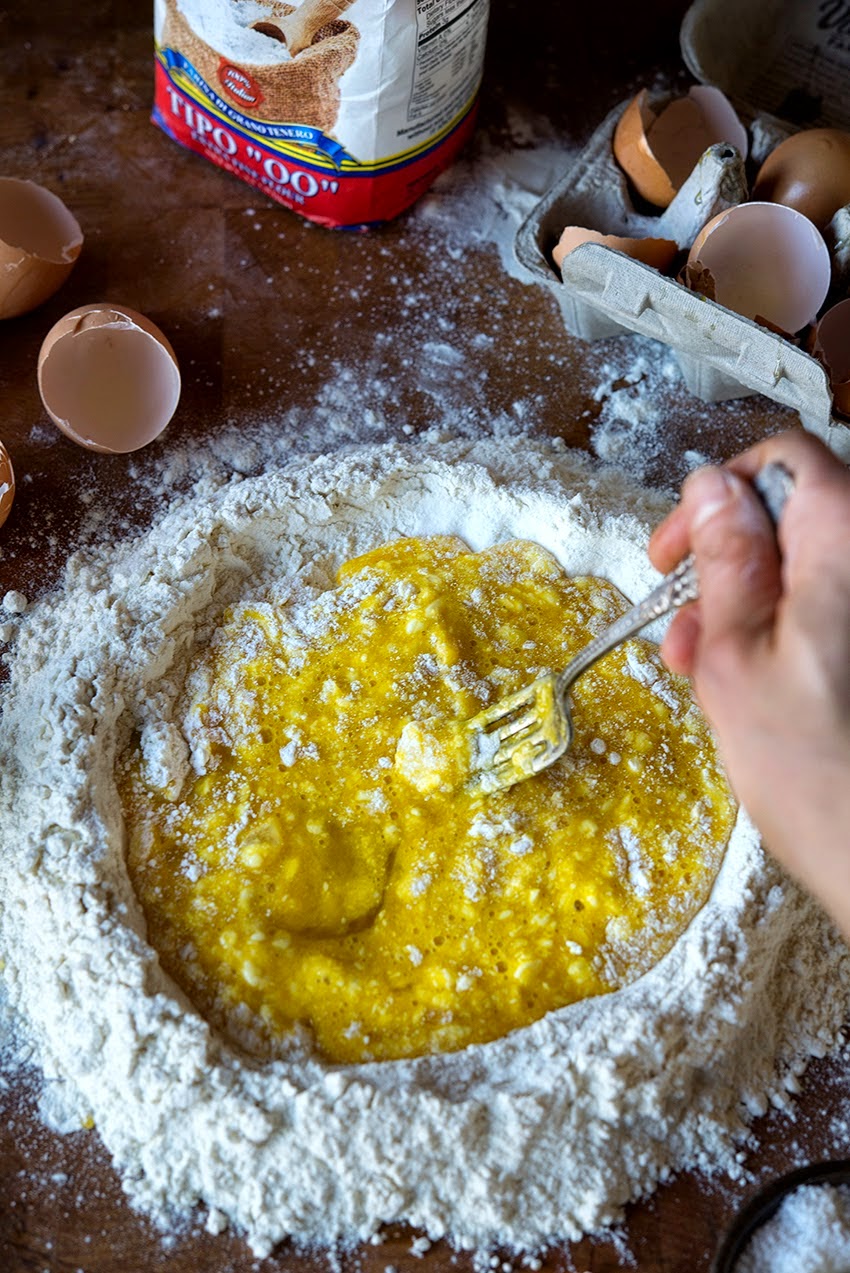
Forming the Agnolotti
5. Run the pasta wheel in a quick, fluid motion cross-wise between each piece of filling to form the individual agnolotto (agnolotti is plural form of the word agnolotto).
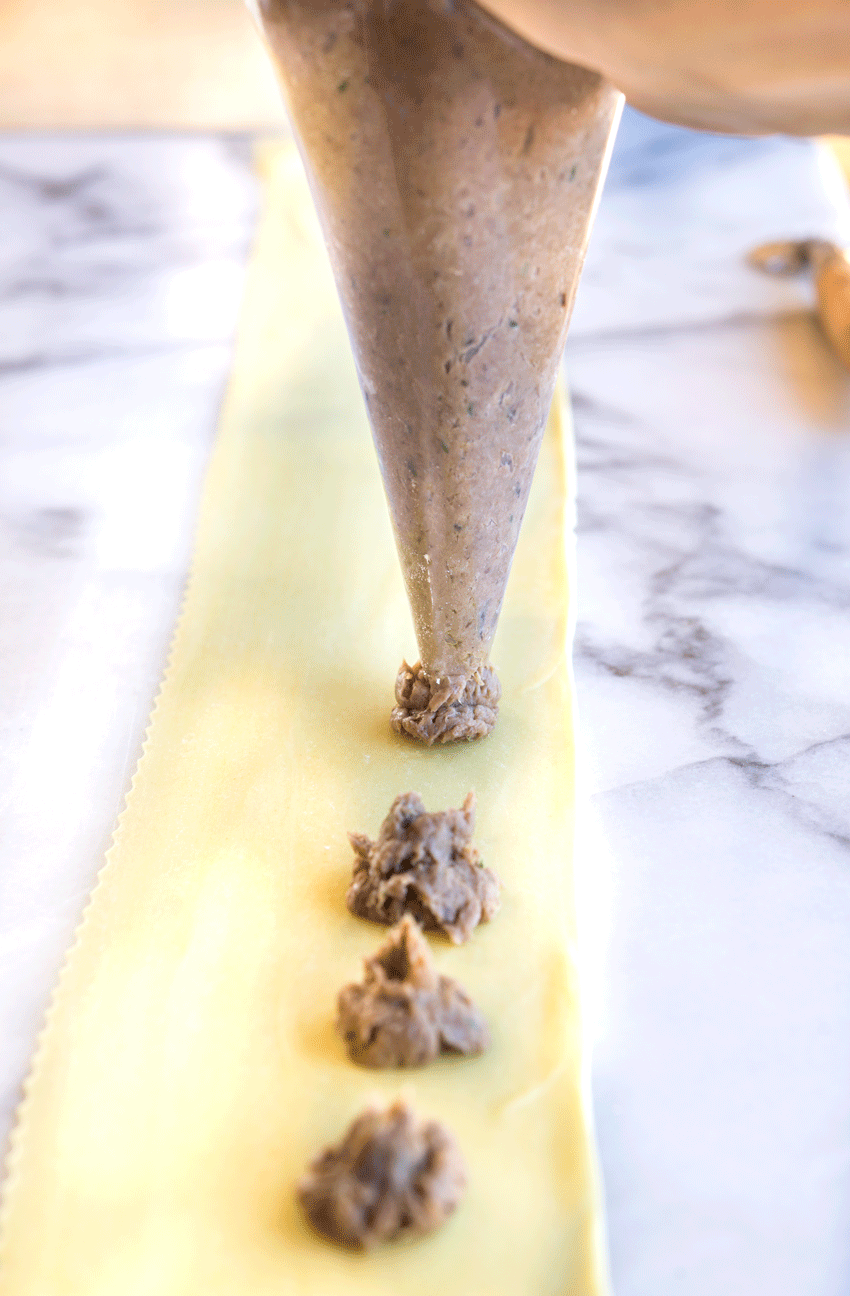
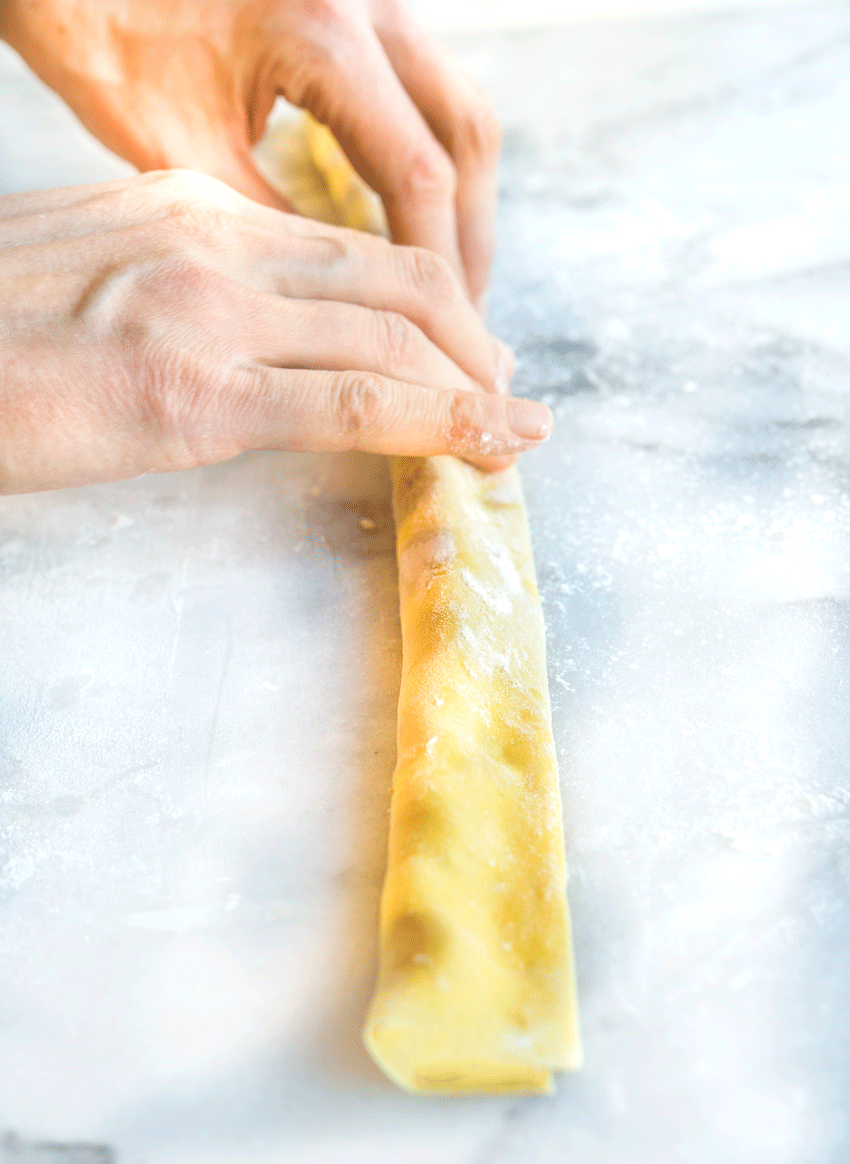
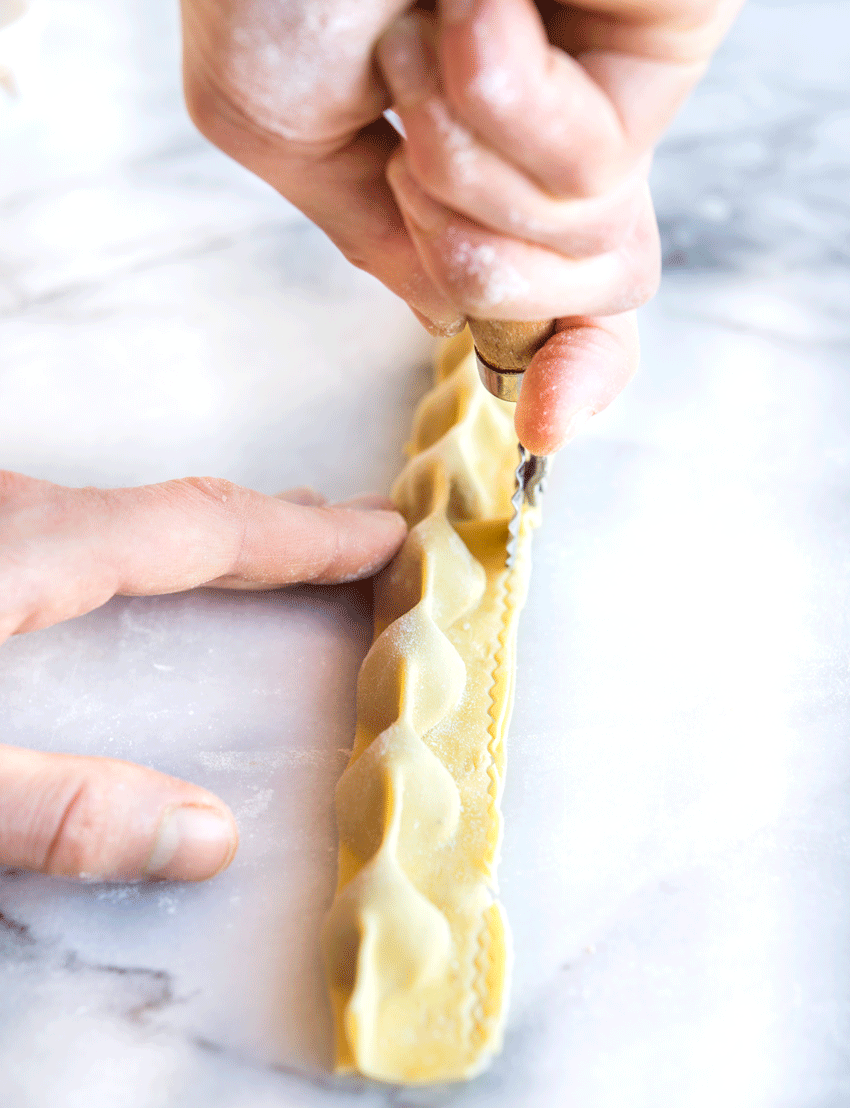
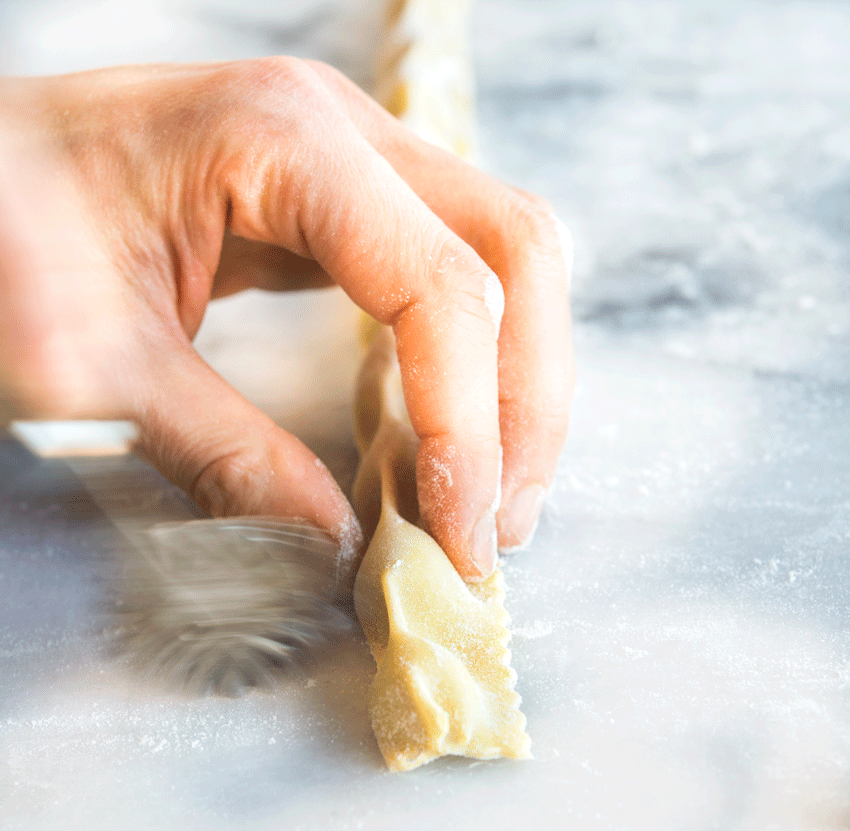
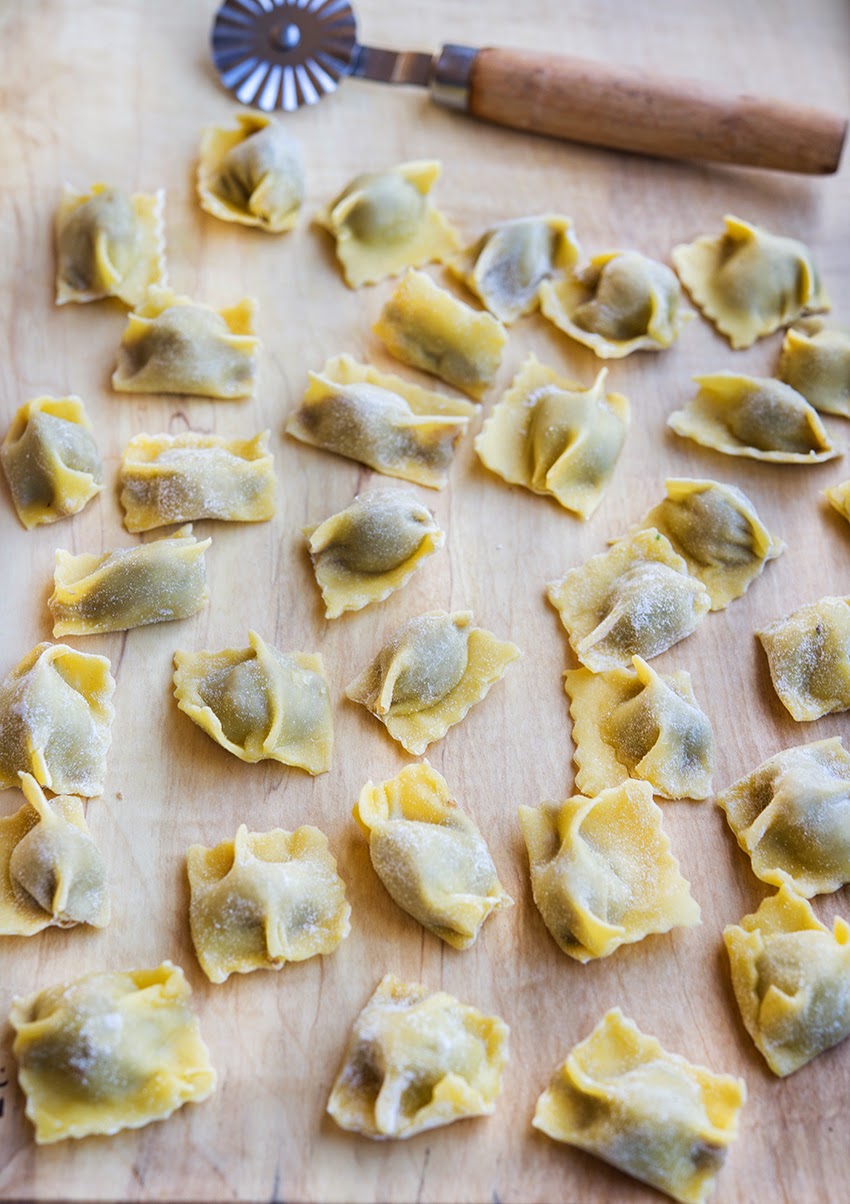
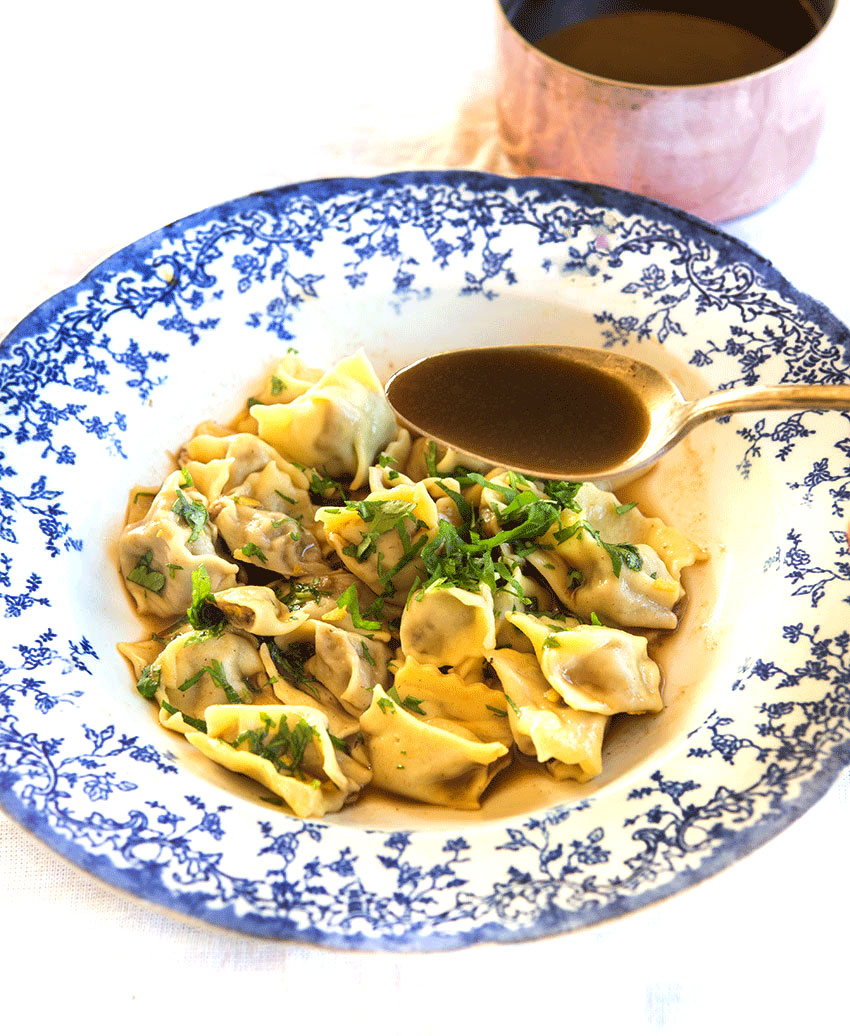
Braised Oxtail
*3 1/2 pounds oxtail
sea salt and freshly ground black pepper
2 tablespoons olive oil
1/2 onion, chopped or 3 medium shallots, thinly sliced length-wise
2 medium carrots, peeled and chopped into ~1″ pieces
2 celery stalks, chopped into 1-inch pieces
3-4 cloves of garlic, minced
2 cups red wine
2 cups beef broth
1 tablespoon tomato paste
few sprigs of parsley
2 sprigs rosemary
2 bay leaves
Preheat oven to 300F.
*Note: 3 1/2 pounds of oxtail was enough for ~3 cups of shredded meat (enough for one recipe of agnolotti).
Agnolotti Filling
Adapted from Scott Conant’s Scarpetta Cookbook
1 tablespoon olive oil
1/2 white onion, chopped
2 cloves of garlic, minced
1 tablespoon sugar
2 tablespoons red wine vinegar
3 cups chopped braised oxtail (see above)
1 cup chicken stock
2 ounces *bone marrow (refer to this post); optional
2 tablespoons chopped flat-leaf parsley
salt
1/4 cup freshly grated Parmigiano-Reggiano cheese
In a medium saucepan, heat the olive oil over medium heat. Add the onion and cook until deep brown, about 12 minutes. Add the garlic and cook another minute. Stir in the sugar and vinegar. Cook, stirring continuously, for 2 minutes. Add the chopped oxtail and 1/2 cup of chicken stock. Simmer and cook, stirring occasionally until the sauce has reduced and become sticky, about 5 minutes.
Add the remaining 1/2 cup of chicken stock and cook until the filling comes together and is thick and deeply rich. Remove the pan off the heat and add the bone marrow (if using), parsley, and 1 teaspoon of salt. Stir until the bone marrow has melted into the sauce.
Transfer the mixture to a food processor while still hot and puree until smooth, about 1 minute. Add the Parmigiano cheese and puree. Taste and re-season with salt and vinegar as needed.
Let the mixture cool to room temperature. Transfer to a piping bag.
See instructions above (in the body of the post) for forming the agnolotti.
*Heat the marrow bones in the oven just long enough to loosen the marrow such that you can scoop it out; refer to this post for preparing bone marrow.
Ravioli (Rav) Dough
2 cups (360 grams) 00 flour
1 teaspoon (5 grams) kosher salt
2 large eggs (100 grams)
5 to 6 egg yolks (90 grams)
1 1/2 teaspoons olive oil
Mix the flour and salt. Place the flour on a dry, clean work surface forming a mound. Create a well in the middle with the bottom of a measuring cup.
Slowly add the eggs, egg yolks, and olive oil. With a fork, gently beat the eggs; be careful not to disturb the walls of the flour. Slowly begin to incorporate the flour walls into the egg mixture. Continue mixing the flour with the eggs until you have a solid mass.
At this point, with your hands, start folding and forming the dough, incorporating the rest of the flour. Use a spray bottle to spritz and moisten the dough until you have a stiff, solid mass (removing any dry clumps of flour).
Knead the dough. Drive the heel of your hand into the dough, rotate the dough 45 degrees and repeat for 10-15 minutes, until the dough is firm and bouncy, and has a smooth, silk-like texture. Tightly wrap the dough in plastic and let rest 30 minutes.
These are a few photos I took of my classmates making agnolotti at the Dublin Cookery School (Dublin, Ireland) last spring.
